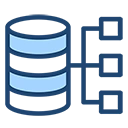Database schema for hospital management system
Designing a comprehensive database schema for a hospital management system involves capturing information related to patients, medical professionals, hospital staff, appointments, medical records, billing, and other relevant entities. Below is a basic example of a database schema for a hospital management system.
Entities:
Patient:
- PatientID (Primary Key)
- FirstName
- LastName
- DateOfBirth
- Gender
- Address
- PhoneNumber
- EmergencyContact
Doctor:
- DoctorID (Primary Key)
- FirstName
- LastName
- Specialization
- PhoneNumber
Nurse:
- NurseID (Primary Key)
- FirstName
- LastName
- PhoneNumber
Appointment:
- AppointmentID (Primary Key)
- PatientID (Foreign Key referencing Patient table)
- DoctorID (Foreign Key referencing Doctor table)
- NurseID (Foreign Key referencing Nurse table)
- AppointmentDate
- StartTime
- EndTime
- AppointmentStatus (e.g., scheduled, completed, canceled)
MedicalRecord:
- RecordID (Primary Key)
- PatientID (Foreign Key referencing Patient table)
- DoctorID (Foreign Key referencing Doctor table)
- NurseID (Foreign Key referencing Nurse table)
- AppointmentID (Foreign Key referencing Appointment table)
- RecordDate
- Diagnosis
- Prescription
- TestResults
Billing:
- BillingID (Primary Key)
- PatientID (Foreign Key referencing Patient table)
- DoctorID (Foreign Key referencing Doctor table)
- NurseID (Foreign Key referencing Nurse table)
- AppointmentID (Foreign Key referencing Appointment table)
- BillingDate
- TotalAmount
- PaymentStatus (e.g., pending, paid)
Department:
- DepartmentID (Primary Key)
- DepartmentName
Staff:
- StaffID (Primary Key)
- FirstName
- LastName
- PhoneNumber
- DepartmentID (Foreign Key referencing Department table)
This schema covers the basic entities needed for a hospital management system. Here are some explanations:
- Patients have personal information stored, including emergency contact details.
- Doctors, nurses, and other staff members are defined with their respective details.
- Appointments link patients, doctors, and nurses, storing information about the date, time, and status of the appointment.
- MedicalRecords store information about the medical history of patients, including diagnosis, prescriptions, and test results.
- Billing captures financial transactions related to health services provided, linking back to the patient, doctor, nurse, and appointment involved.
- Departments are defined to categorize staff members based on their roles.
- Staff includes various hospital staff members, and their department affiliation is recorded.
Depending on the specific requirements of your hospital management system, you may need to expand or modify this schema. Consider additional features such as inventory management, medical imaging, electronic health records (EHR), and any other information relevant to your hospital management platform. Additionally, ensure that your system adheres to healthcare data privacy and security regulations.

